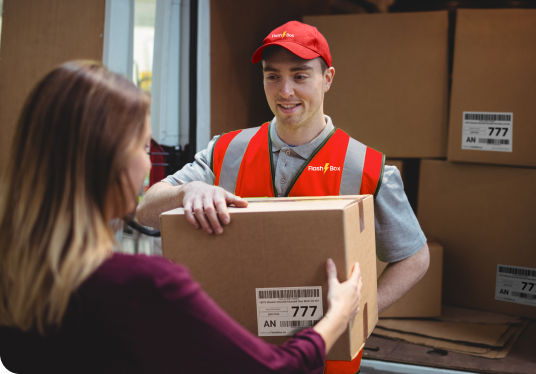

What types of issues come to mind when you think of peak shopping season? Shipping delays, inventory shortages, or fee surcharges might be some. If you’re like most merchants, you’ve already started planning how you’re going to overcome these challenges once they show up.
As an eCommerce seller, you have even more barriers likely to show up this peak season. If you want to keep up with the growing volume, adjusting to the demands of customers will be a necessity. But what if you want to thrive and not just survive the holidays? Peak season might be busy, but it does bring enormous growth to the businesses that work for it. If you want to see what issues you can start preventing now and how you can set your eCommerce store up for success, keep reading.
Understanding when shopping tends to increase could be helpful if this is one of your first peak seasons. Peak season refers to the busiest shopping time of the year when sales see a rapid increase over a short period of time.
Generally speaking, peak season runs from mid-October until mid-January of every year. There are peaks within the peak season, however. Black Friday, Cyber Monday, and Boxing Day, to name a few, all bring quick increases in sales. Other celebrations also add to the busy season, like Christmas, New Year’s, and Halloween, when shoppers are hosting parties. Over the few months these holidays occur, shopping is at an all-time high.
Hence, most of the peak season takes place in the last months of the year. However, what it looks like for you might be different from others. Depending on what you sell and who your audience is, your peak season could vary.
Since the busyness of peak season is fast approaching, eCommerce merchants are quickly preparing for an increase in demand. But what many don’t know is that an overnight boost in sales can bring just as many problems as achievements.
Going into the peak season, all parts of your eCommerce store need to be in their best shape. It should be ready for customers to browse on and order from, and should be up to date with all your recent items. Plus, your partnerships should all be set up and allow your business to be as well-oiled as possible. By reviewing how well your shop is currently working, you can see where improvements might be needed before it possibly gets even busier.
There are some common challenges that arise that most eCommerce sellers face at the busiest time of the year. By preparing early, you can avoid problems and find ways to have the peak season run smoothly. This year, some experts are predicting shopping trends to change once again. Customers might not be as willing to buy, and the peak season could see an unusual expansion. Hence, to stay ahead, preplanning will need to be in place not only to sell more, but sell more efficiently.
Here are some of the most common barriers for eCommerce merchants during the peak shopping season.
The cost of running your eCommerce business is likely stable across the year. You know when to place orders from suppliers or manufacturers, and all the tools you use are calculated as part of your monthly expenses. However, it’s not unusual for service providers to increase fees or tack on additional costs around the peak season. Plus, upfront payments might be higher than expected as you need more stock.
For example, if you use a third party to handle your fulfillment, they might increase the fees over the holiday season to account for the additional demand. Amazon raised seller fees this year for merchants using their fulfillment service. Likewise, your suppliers might charge extra as you approach the more demanding months. Suppliers are looking to make money as well, and an increase in prices might occur as demand rises. Since you have no choice but to purchase more, you might be stuck paying a premium.
The solution to this is finding cost-effective measures that can help you meet demand and also remain profitable. Conducting some research into your spending habits can help you cut down on unnecessary costs. Finding the right partnerships can also be equally important since some providers charge more than others. If you’re looking forward to a busy season that pays off with more revenue, a deep look into your finances might help you prevent rising costs.
Another typical challenge for eCommerce stores over the peak shopping season is managing inventory. As demand increases, your supply will need to increase as well. However, most retailers (especially at the beginning) are not able to predict the rise in demand to be prepared. Hence, inventory troubles might be an issue you need to plan ahead in order to overcome.
For example, if you usually sell ten t-shirts a day, you know exactly how many to keep in stock for when customers buy them. But if the peak season suddenly raises you to twenty-five t-shirts a day, you’ll need plans in place to meet the demands.
The solution to this will be to plan ahead. If you’ve faced a peak season before, using metrics from the past year, as well as current spending trends, will be the best way to estimate future volume. If your eCommerce store is new, you’ll need to rely on current trends to assess if you can expect a peak. Based on your expected volume, have supply and suppliers ready to go to be well prepared.
And finally, the processes managing the movement of goods through your supply chain might face issues as the busiest time of year approaches. Supply chain management refers to how you move goods from buying to selling, or from provider to customer. For example, you buy your items from a supplier or manufacturer. Then, when a sale is made, you need to gather, package, and ship the item to the end destination. The faster this process is, the more orders you can complete in a specific time frame.
While some eCommerce stores rely on manually tracked processes to move goods through the purchasing cycle, this might cause issues when it comes time to pick up speed. Your picking, packing, and delivery processes have to be as well as organized as possible. By incorporating technology into these processes, like inventory management systems, you can limit the likelihood of human error along the way (saving plenty of time).
One way you might see this issue arise is through delays during the busy season. If the picking and packing of orders are slow, deliveries will be directly affected. In turn, delayed deliveries lead to upset customers and sometimes returned orders, costing more money and time to fix. In order to manage an increase in orders, you’ll need to have these processes streamlined to avoid issues along the way (and so you can complete more orders). Your supply chain is definitely something to look into before demands increase, and it’s also much easier to organize before the peak season starts.

Now that you have an idea of what the busiest shopping season usually looks like, you’ll need to understand how you can make it easier. Although there are some bumps in the road that might be unavoidable, most issues can be prevented by preparing early. Or you can get a kick start on peak season growth and find new ways to market your product to make it a hot topic this holiday season.
Here are some essential tips to follow if you want your business to stand out during the peak season and also avoid major issues and upset customers. Together, these points can help you make the most of the peak shopping season.
Our first recommendation is to optimize all of your selling channels. Based on predicted trends for the 2022 holiday shopping season, buying from mobile devices will become more common. Online shopping no longer refers to only website browsing but incorporates social media and influencer-based shopping as well. Creating a seamless experience where potential buyers can interact with your store on many fronts will increase their likelihood of purchasing.
Social media shopping is quickly picking up pace. Items trending on TikTok and Instagram can see overnight boosts in growth. Indeed, growth can be even more considerable when influencers are supporting products they use in their own lives. Not only does this positively impact your brand recognition, but it also builds credibility for your proof. Social proof is a powerful tool.
Hence, users look online to see what products to buy next. By optimizing your selling channels and creating a seamless experience between touchpoints, customers are much more likely to purchase from you. One of the keys to success this peak season will be promoting your product across various channels.
Secondly, always communicate as much as possible with your customers. Communication goes a long way when it comes to the busy shopping season, and customers don’t want to be left in the dark. Communicating clearly can save you plenty of upset customers.
Communication refers to being open with customers about fees, delivery time frames, and issues. When customers choose a merchant to buy from, trust is a major factor impacting their decision. Hidden fees or vague delivery time frames can often cause them to find another seller instead. The best way to avoid these issues is to be as transparent as possible and keep customers in the loop.
Although communication can resolve issues, it can also be a proactive way to avoid problems in the future. Delivery is a great example to explain the level of communication customers expect. When customers purchase an item online, they want a precise time frame of when they can expect it. Communicating when the parcel is expected to arrive helps the customer build trust with you. When it comes to actually delivering the package, customers expect the same level of communication. Any delays should be communicated to them as soon as possible, so they’re updated on the parcel location.
Lastly, we recommend finding the right partners to support your eCommerce business in this busy time. The right support can help your businesses grow and succeed, while bad partnerships can hold you back more than you might realize.
The right partnerships matter across your entire business. Who you get your supply from, deliver your parcels with, or outsource other tasks to all play a role in how your business works. These third-party service providers can all offer you unique benefits if you work with the providers who are best suited to you.
If you haven’t started preparing for the peak season, now is the time! eCommerce businesses have plenty of opportunities to see fast-paced growth over the holiday season if all the right processes are put in place. Plus, to avoid issues during a hectic time, protocols have to be set to keep everything running smoothly.
To see happy customers and benefit from peak season’s attention, starting to organize your eCommerce store early is the best way to go. Find the partnerships that make sense to you and support your growth without causing you additional stress over the holiday season. One of these major partnerships will be a delivery provider and finding the solution that best fits you can be a difficult one. Most major delivery providers are expensive and slow, costing you a lot of stress over the peak period.
Delivery is a major factor impacting the success of eCommerce merchants. To handle last-minute deliveries and growing customer demands, delivery has to be fast and affordable. As mentioned before, working with the partners who best support you is key to growing your eCommerce business this year. If successfully completing last-minute deliveries is part of your plan this holiday season, FlashBox same-day deliveries can help.
Same-day deliveries help you satisfy your customers and meet demands as holidays like Christmas approach. While most delivery providers cut off Christmas deliveries around mid-December, same-day deliveries allow you to continue accepting orders up until days before.
Talk to an expert today to hear more about same-day deliveries for the peak season!